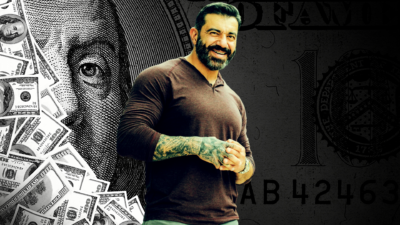
Introduction
Throughout the month of June, we have been focusing on how businesses can help other businesses succeed. In today’s competitive landscape, businesses often strive to find unique ways to gain a competitive edge. One effective approach is through collaboration and cooperation among companies themselves. In this blog, we delve into the concept of businesses helping other businesses and explore how collaboration can unlock success for all parties involved. From sharing resources to joint marketing efforts, we’ll uncover the various strategies and benefits that arise when businesses come together to support one another.
Businesses Helping Other Businesses: A Pathway to Success
Collaboration among businesses has become an increasingly popular strategy for achieving growth and overcoming challenges. By leveraging each other’s strengths, companies can foster innovation, reach new markets, and build mutually beneficial relationships. Masterminds are an excellent resource for collaboration. The key is to find one that best meets your needs as a business owner, where you are now. We are launching our SMB Mastermind Council on July 27th. The following are several ways in which businesses can support and assist one another.
Knowledge Sharing: The Key to Collective Growth
Knowledge is power, and when businesses share their expertise and experiences, it paves the way for collective growth. Through mentorship programs, masterminds, industry-specific workshops, or online communities, companies can actively contribute to each other’s development. By exchanging best practices, insights, and lessons learned, businesses can elevate their operational efficiency and avoid common pitfalls.
Resource Collaboration: Leveraging Strengths
Collaborating on resources is a win-win situation for businesses. From sharing equipment and facilities to pooling research and development efforts, resource collaboration helps companies optimize their operations while minimizing costs. For instance, two software development companies can share access to specialized tools, reducing expenses and accelerating product development. By tapping into shared resources, businesses can enhance productivity and ultimately boost their bottom line.
Strategic Partnerships: A Synergistic Approach
Strategic partnerships between businesses can unlock a world of opportunities. By combining complementary products or services, companies can access new markets and expand their customer base. These partnerships often enable businesses to offer bundled solutions, providing added value to customers. For example, a web design agency and a content marketing company could join forces, providing clients with comprehensive digital marketing solutions. Through strategic alliances, businesses can enhance their competitiveness and create new revenue streams.
Joint Marketing Efforts: Amplifying Reach
Marketing campaigns can be costly and time-consuming, particularly for small businesses. However, by collaborating on marketing efforts, companies can amplify their reach and maximize the impact of their campaigns. Co-marketing initiatives, such as joint promotions or cross-branding, allow businesses to tap into each other’s customer bases, exposing their products or services to a broader audience. This approach fosters mutual growth and generates a sense of camaraderie among businesses.
Supplier and Customer Relationships: Strengthening Bonds
Businesses helping other businesses can extend beyond partnerships and collaborations. Establishing strong supplier and customer relationships is equally crucial. By nurturing these connections, companies can foster loyalty, gain valuable insights, and secure preferential treatment. Timely payments, referrals, or discounts are just a few ways businesses can support their suppliers and customers, building trust and long-term partnerships.
Networking and Referrals: Expanding Opportunities
Networking is a vital aspect of any successful business, and when businesses help each other, networking opportunities expand exponentially. Through referrals and recommendations, companies can refer potential clients or partners to their trusted associates. This reciprocal relationship facilitates growth for all parties involved. As the saying goes, “It’s not just what you know, but who you know.”
Conclusion
In an interconnected business world, the concept of businesses helping other businesses has emerged as a powerful strategy for driving success. Whether through knowledge sharing, resource collaboration, strategic partnerships, joint marketing efforts, or nurturing supplier and customer relationships, the possibilities for collaboration are endless. By embracing a cooperative mindset, businesses can unlock new opportunities, accelerate growth, and create a thriving ecosystem where all participants thrive. Remember, when businesses help each other, everyone wins.









